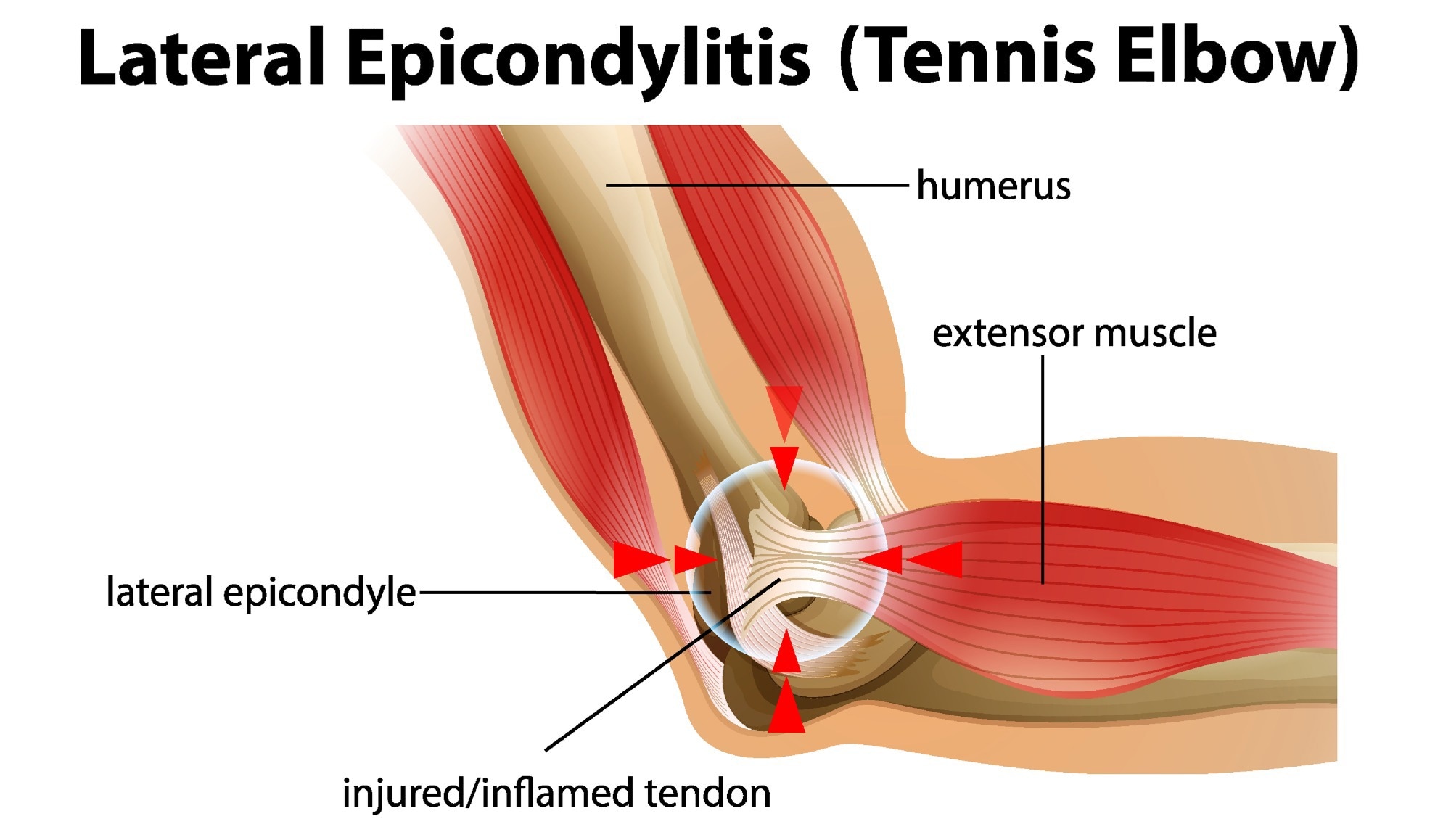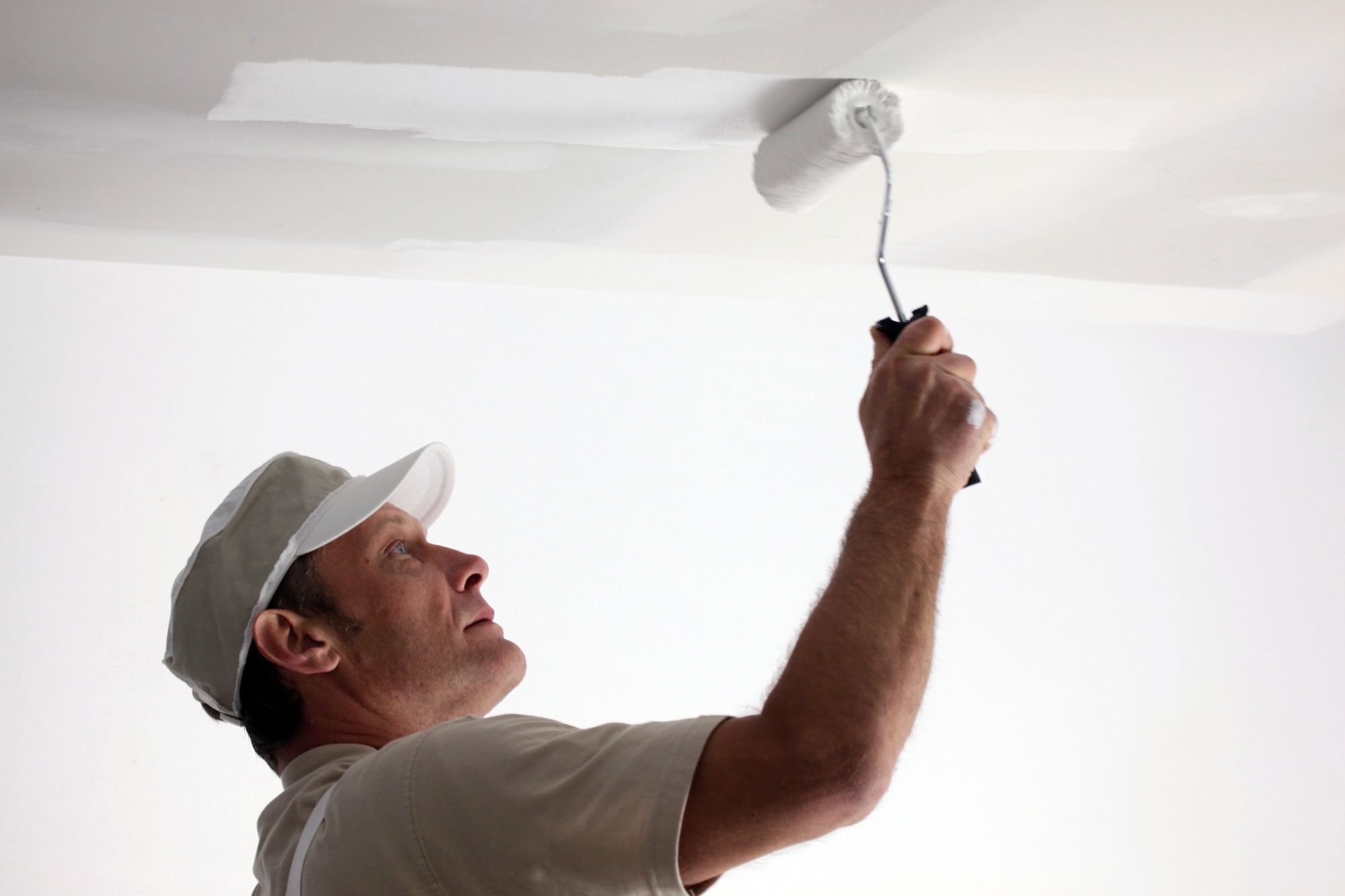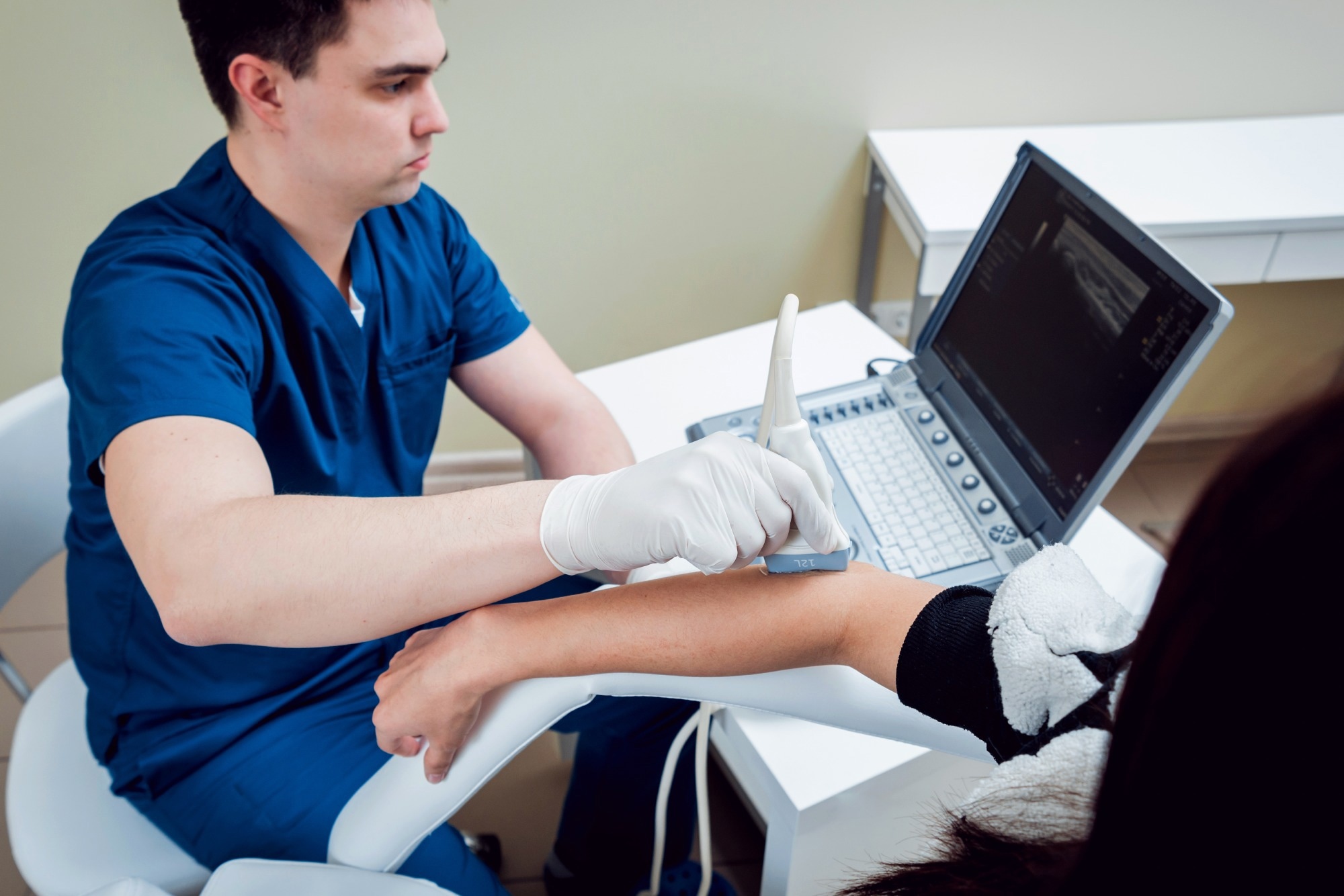Introduction and clinical presentation of tennis elbow (lateral epicondylitis)
Causes
Pathophysiology and predisposing factors
Diagnosis and treatment
References
Further reading
Introduction and clinical presentation of tennis elbow (lateral epicondylitis)
Tennis elbow (or lateral epicondylitis) is the most common cause of lateral elbow pain among men and women aged 30 to 50 years and arises from the repetitive stress on or the overuse (continued pronation, supination, extension, and flexion) of the forearm muscles. Overuse could lead to the formation of microscopic tears or microtears in the tendon at the point where it attaches to the bone and swelling of the tendons that bend the wrist backward away from the palm leading to pain and difficulty in movement of the affected muscle. The tendon most likely affected is known as the extensor carpi radialis brevis.
An individual with a tennis elbow may experience persistent pain and present with tenderness on the outer (lateral) aspect of the elbow which may travel down the forearm to the back of the hand when (i) lifting or bending your arm, (ii) when gripping small objects, such as a pen or a coffee cup, (iii) when twisting your forearm, such as turning a door handle or opening a jar and (iv) when shaking hands.
The dominant arm is usually affected, although both hands can be affected. Pain may also persist when you place your arm and hand palm-down on a table and then try to raise your hand against resistance. A weak grip is another symptom of tennis elbow. Extending the arm entirely may be difficult. Pain on the elbow's inner side is known as a golfer's elbow.
 Lateral epicondylitis / tennis elbow illustration. Image Credit: BlueRingMedia / Shutterstock
Lateral epicondylitis / tennis elbow illustration. Image Credit: BlueRingMedia / Shutterstock
Causes
Despite its name, tennis elbow is caused by movements of the forearm in numerous activities other than tennis that involve twisting the arm from the elbow, as in executing the backhand stroke in tennis. Other racquet sports (such as badminton and squash), which involve the same type of movement, and an overhead swing, may also cause an identical injury. Interestingly, tennis elbow occurs far less frequently in top-rated athletes, indicating that faulty swing mechanics contribute to its development.
Tennis elbow has also been reported to occur in sports that involve throwing heavy objects, such as a javelin or a discus. Occupational workers such as painters, plumbers, bricklayers, carpenters, cooks, and construction workers who use screwdrivers, chain saws, or twisting hand tools can also experience tennis elbow. Additionally, gardening shears and butcher tools in meat shops may cause tennis elbow due to forceful contraction of the forearm muscles.
 Occupational workers such as painters can experience tennis elbow. Image Credit: Phovoir / Shutterstock
Occupational workers such as painters can experience tennis elbow. Image Credit: Phovoir / Shutterstock
Further, the prolonged use of a computer keyboard and mouse, or scissors, can also cause tennis elbow due to repeated fine movements of the hand and wrist muscles. Activities that involve delicate, repetitive hand and wrist movements, such as typing or sewing, can also cause tennis elbow. Playing the violin, which requires a bent forearm and wrist, may overload the elbow. Direct blows or trauma to the elbow joint can cause sudden and excessive loading of the joint and lead to tennis elbow, although this is a rare cause.
Pathophysiology and predisposing factors
The basic pathology of tennis elbow involves an imbalance between the forearm muscle strength and the load put on the forearm muscles. The symptoms of tennis elbow are thought to develop due to the degeneration of chronically injured tendon fibers with micro-tears leading to inflammation and pain near the bony lump (lateral epicondyle) on the lateral aspect of the elbow joint. However, tendon tears are rarer than expected.
Factors that predispose to the muscular imbalance include (i) weak forearm and shoulder muscles, (ii) stiffness of the forearm or the elbow joint, (iii) unstable elbow joint, (iv) positioning the hand and arm in non-neutral positions for prolonged periods, (v) excessive loading of the elbow joint during sports activities by the use of incorrect techniques and/or incorrectly-sized equipment, or overuse during sports activities such as tennis, and (vi) excessive loading on the joint due to the use of heavy hand-held equipment, too tightly strung or too short racquets, or too heavy or wet balls.
Psychosocial factors such as the lack of support in the workplace, depression, or anxiety have also been associated with tennis elbow; they may not be causative but rather the effect of tennis elbow. Demographic factors that have been reported to be associated with tennis elbow include older age, female sex, smoking history, and the presence of chronic disorders such as diabetes mellitus.
Diagnosis and treatment
X-rays, magnetic resonance imaging (MRI), and electromyography (EMG) may be required to diagnose tennis elbow and rule out pain from conditions such as rheumatoid arthritis, neck injuries, or nerve compression. Tennis elbow usually improves without treatment (a self-limiting condition), but some treatments may improve symptoms and speed up recovery.
Individuals should rest their injured arm and stop any activity causing the problem. Warm-up exercises and gently stretching arm muscles before playing a sport that involves repetitive arm movements are necessary. Wearing a tennis elbow splint while using the affected arm (not while resting or sleeping) could prevent further damage to the elbow tendons.
Therapeutic ultrasound, holding a cold compress such as ice wrapped in a towel against the elbow, or muscle stimulating techniques for a few minutes several times a day can help ease the pain and improve muscle healing. In addition, taking painkillers, such as paracetamol, may help reduce mild pain. Non-steroidal anti-inflammatory drugs (NSAIDs) such as ibuprofen can also be used to help reduce inflammation.
 Elbow sonography. Image Credit: Roman Zaiets / Shutterstock
Elbow sonography. Image Credit: Roman Zaiets / Shutterstock
Physiotherapy may be used to strengthen the forearm muscles. Other options, such as therapeutic ultrasound, steroid (cortisone) injections, extracorporeal shockwave therapy, and platelet-rich plasma (PRP) injections, may also be beneficial. Massaging and manipulating the affected area may help relieve the pain and stiffness and improve the range of movement in your arm.
Surgery (open surgery or arthroscopic surgery) may be performed as a last resort to remove the damaged part of the tendon and reattach healthy muscle back to the bone in case the non-surgical treatments are not effective. Tennis elbow can last between six months to two years, but a full recovery is usually made within a year in most cases. An individual can generally return to athletic activity four to six months after surgery. Tennis elbow surgery is successful in 80% to 90% of patients; however, it is not uncommon to see a loss of strength post-surgery.
To conclude, tennis elbow is essentially an injury caused due to repetitive stress on the forearm muscles during racquet sports, occupational work such as gardening, painting, plumbing, or other activities that involve extensive and repetitive twisting movements involving the forearm. Tennis elbow results in pain and tenderness in the lateral aspect of the elbow joint as a result of chronic degeneration of elbow tendon fibers and microtear formation.
The pain may aggravate with activity and can result in difficulties in even lifting a pen or shaking hands and a weaker grasp. However, it is a self-limiting condition, the symptoms of which can improve by several treatments such as medications, physiotherapy, injections, ice applications, shock wave therapy, and surgery.
References
Further Reading